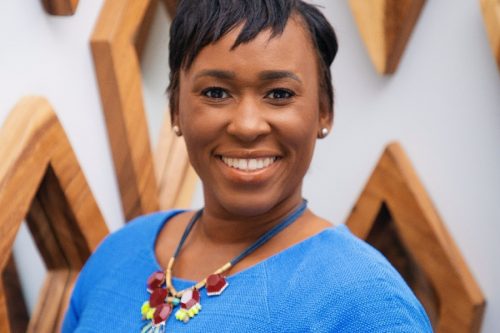
Rudolph John Chauncey Fisher, May 9, 1897 – December 26, 1934, was an Harlem physician, radiologist, novelist, short story writer, dramatist, musician, and orator.
His father was John Wesley Fisher, a clergyman, his mother was Glendora Williamson Fisher, and he had two siblings. Fisher married Jane Ryder, a school teacher from Washington, D.C. in 1925, and they had one son, Hugh, who was born in 1926 and was also nicknamed “The New Negro” as a tribute to the Harlem Renaissance. Fisher had a successful career as an innovative doctor and author, who discussed the dynamics and relationships of Black and White people living in Harlem. This racial conflict was a central theme in many of his works.
Early life
Born on May 9, 1897, in Washington, D.C., Rudolph Fisher grew up in Providence, Rhode Island. He was the youngest of three children born to Reverend John Wesley Fisher, a Baptist pastor, and Glendora Williamson Fisher.
Fisher graduated from Classical High School in 1915 with honors and further went to Brown University where he studied English and biology, and graduated Phi Beta Kappa, Delta Sigma Rho, and Sigma Xi. During this time, he earned his Bachelor of Arts from Brown in 1919, where he delivered the valedictory address and received a Master of Arts a year later.
After graduating from Brown, Fisher took part in a Manhattan-based program titled “Four Negro Commencement Speakers” where he read his Brown commencement speech, “The Emancipation of Science”. At Howard Medical School, he studied radiology.
On April 14, 1923, in Harlem, Fisher married Jane Ryder, a public school teacher, a year after meeting her. They had one child, a son, Hugh Ryder Fisher (1926–1964).
He later attended medical school at Howard University in Washington D.C, graduating with honors in 1924. Then, he came to Harlem, New York in 1925 to take up a fellowship of Physicians and Surgeons at Columbia University’s college, during which time he published two scientific articles of his research on treating Bacteriophage viruses with ultraviolet light.
In addition to researching and writing in medical and literary fields, Fisher also pursued his love for jazz. He played the piano and wrote musical scores. Fisher’s ability to use all of his talents simultaneously was evident during his college years. The summer after his college graduation, he and Paul Robeson toured along the East Coast as a band.
Medical career
During the 1920s, Fisher published his research on the effect of ultraviolet rays on viruses in medical journals. He was a head researcher at Manhattan’s International Hospital. His experience in the medical field helped him to get ideas for his writing on mystery, and it helped him to create illustrations of the human body. Fisher completed an internship at Freedman’s Hospital in one year in 1925. In 1926, he and his wife moved to New York. Fisher then joined a prestigious board called the Fellow at the National Research Council of the College of Physicians and Surgeons. Fisher soon after became superintendent of the International Hospital in Harlem in 1927, and set up his private practice as a radiologist, with an X-ray laboratory of his own, in New York.
Literary career
Fisher started his professional writing career by contributing to journals, such as the NAACP’s magazine The Crisis. Fisher’s first novel “Walls of Jericho” came out in 1928. He was inspired by a friend’s challenge to write this novel treating both the upper and lower classes of black Harlem equally. This novel presents a vision that African American men and women can both get ahead in life if they come together and form a bond against centuries of oppression. He then went on in 1932 to write “The Conjure Man Dies”, the first novel with a black detective as well as the first detective novel with only black characters. This novel was also set in Harlem. His novel was publicized by Covici-Friede making him the second African American to write a detective novel in the United States. He also wrote two short stories, the first of the two “City of Refuge“, which appeared in the Atlantic Monthly of February 1925, and the second, “Vestiges” both appeared in Alain Locke’s anthology. These two short stories accurately depicted life and events during the Harlem Renaissance. Fisher’s last published work, “Miss Cynthie” appeared in Story magazine in 1933. It was a short story about a Southern migrant grandmother, Miss Cynthie. She arrived in Harlem to meet her successful grandson. She was a hard-working and religious woman who had raised her grandson in the South. She expected him to have established himself as a member of the black professional society. What she did not know was that his success emerged from being an entertainer in a theater that she viewed to be a sinful place. Although she is against what he does, she comes to realize that he has developed into an honest young man. Other short stories written by Rudolph Fisher are “High Yaller” in 1926, “Blades of Steel” in 1927, “Ringtail”, “The South still lingers on”, “Fire by Night”, “Promised Land”, “The Caucasian storms Harlem” in 1927 and “Common meter” in 1930.
As Oliver Henry states, “Fisher writes about black people in a manner which expresses their kinship with other peoples. He underscores and highlights the fundamental human condition of black Americans. … He captures the historically induced unique qualities of black people; but, perhaps even more importantly, he writes of them basically as people.”
Participation in Pan-Africanism
Throughout his career, Fisher had an interest in Pan-Africanism, which is a movement that aims to encourage and strengthen the unity of all African-Americans. It started in 1900.
Fisher supported the Pan-African Congress, whose participants promoted self-determination for colonized Africans as a necessary prerequisite for complete social, economic, and political emancipation. Unlike Malcolm X, Marcus Garvey, and W.E. B. DuBois who tried to incorporate stereotypes of black exoticism into Pan-Africanism, Fisher focused on the broader struggle for black labor privilege and women’s empowerment.
Death
Fisher died in 1934 at the age of 37 from abdominal cancer likely caused by his own x-ray experimentation. He was buried in Woodlawn Cemetery in The Bronx, New York City.
- Wells Fargo Shares Economic Impact From Open For Business Fund
- Harlem Rallies For Kamala Harris: A Historic Gathering Of Black Women Leaders
- In Conversation With Ketanji Brown Jackson At The Apollo Theater In Harlem
- Chancellor David C. Banks Appoints Simone Hawkins As Deputy Chancellor For Early Education
- Vibrant Summer Styles Are Making A Comeback 2024
Become a Harlem Insider!
By submitting this form, you are consenting to receive marketing emails from: Harlem World Magazine, 2521 1/2 west 42nd street, Los Angeles, CA, 90008, https://www.harlemworldmagazine.com. You can revoke your consent to receive emails at any time by using the SafeUnsubscribe® link, found at the bottom of every email. Emails are serviced by Constant Contact









